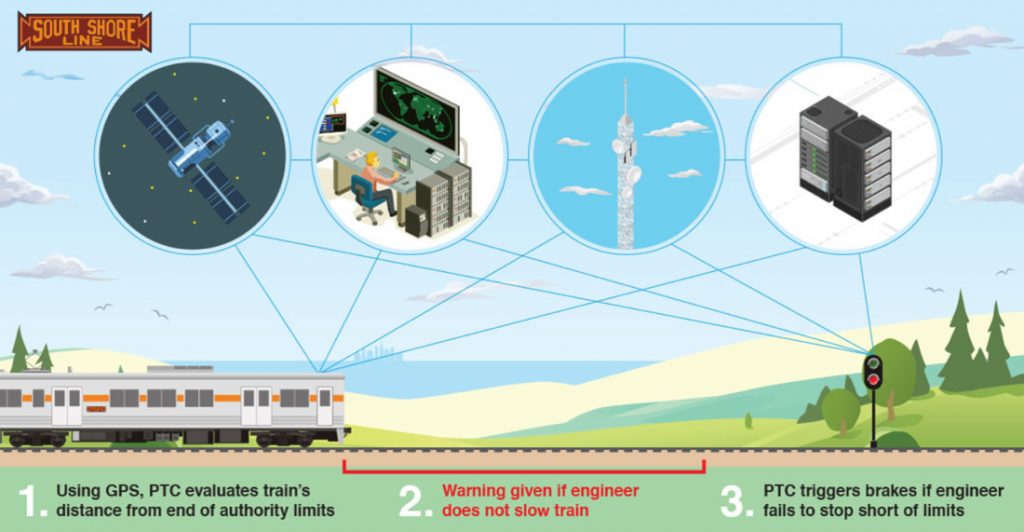What is PTC?
PTC is an unprecedented, advanced set of technologies that will automatically stop a train before certain human error incidents occur. In other words, this technology is capable of automatically stopping a train should a train operator fail to take appropriate action for the conditions at hand.
How Does It Work?
PTC systems required to comply with the requirements of Subpart I must reliably and functionally prevent:
- Train-to-train collisions
- Over speed derailments
- Incursion into an established work zone; and
- Movement through a main line switch in the improper position.
- Other functions are applicable within the requirements as specific conditions warrant.
PTC systems must also provide for interoperability in a manner that allows for equipped locomotives traversing other railroad’s PTC-equipped territories to communicate with and respond to that railroad’s PTC system, including uninterrupted movements over property boundaries.
What Is NICTD’s Role?
The Northern Indiana Commuter Transportation Board of Trustees, the governing body overseeing the SSL, strongly advocated for a time extension to the Act in 2015 to allow the SSL and many other railroads across the country to reach this major milestone. The Board also advocated for federal funding for this safety mandate and was very pleased when, with the help of our Indiana’s Congressional delegation, NICTD secured an $8 million PTC grant from the Federal Railroad Administration (FRA) to help offset the cost of this project.
The South Shore Line is developing and implementing this system as mandated by the Rail Safety Improvement Act of 2008. However, because each railroad is unique, the SSL is developing a PTC system from the ground up that meets their unique requirements. PTC has to work to perfection; there are no shortcuts when it comes to safety. It is not enough to get PTC to operate across a single railroad’s footprint; it must be interoperable with other railroads.
As the SSL develops and installs each component, it must pass multiple, rigorous testing requirements in lab testing, field testing, and FRA certification. Field testing will require the physical testing of equipment on the SSL rails to ensure PTC systems are completely interoperable and working together seamlessly. Field testing began April 2018, and the SSL’s application for Revenue Service Demonstration (RSD) was approved by the FRA on November 2, 2018. Entry into RSD will allow the SSL to start integrating PTC into daily passenger service.
How Does This Affect SSL Riders?
The effect of field testing on passenger trains is expected to be minimal, but the SSL will work diligently to keep their passengers updated and informed during this time. Passengers may notice different cars being used or empty cars running on the line at non-scheduled times that will be used for testing.

For more information, visit: https://www.fra.dot.gov/ptc
For more information on a national level, see the American Public Transportation Association (APTA) PTC website at: https://www.apta.com/ptc
Positive Train Control Plans, visit: https://www.regulations.gov/docket?D=FRA-2010-0043
